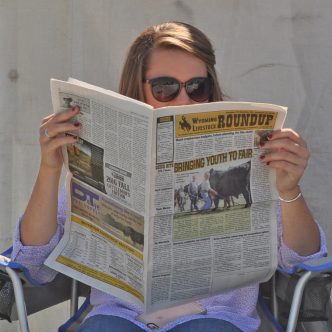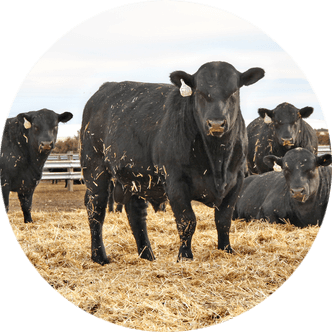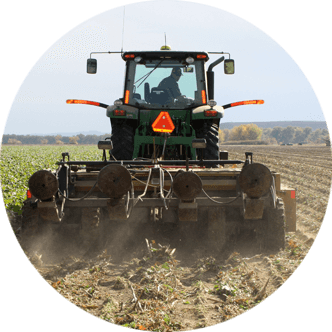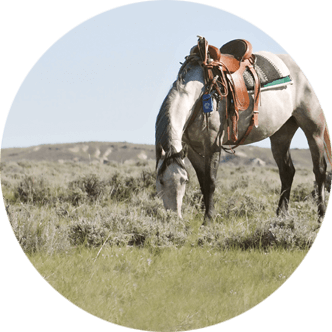USDA releases plan to boost veterinary workforce
On Aug. 28, U.S. Secretary of Agriculture Brooke Rollins announced a new plan aimed at addressing the shortage of rural veterinarians and boosting the large animal veterinary workforce across the nation.
The Rural Veterinary Action Plan (RVAP) details five actionable items aimed at supporting veterinarians, bolstering the veterinary workforce, protecting livestock and safeguarding producers in rural communities.
Details of the plan were announced by Rollins during a press conference at Mississippi State University’s College of Veterinary Medicine.
“Rural veterinarians are vital for the agricultural economy in the U.S.,” stated Rollins during the conference. “Our farmers and ranchers rely on these critical services to prevent the transmission of animal disease, protect our food supply and support America’s rural economy.”
“As the number of rural food animal veterinarians continues to decline, the U.S. Department of Agriculture (USDA) is putting farmers first to ensure we build back the first line of defense in our animal food production system – the rural veterinarian,” Rollins continued.
Understanding challenges
Rural areas are populated by producers who rely heavily on veterinary services. However, several studies have highlighted a concerning decline in the rural veterinary workforce throughout the past several decades.
Factors like financial burdens, unpredictable hours and physical demands often create barriers to entry, leading many veterinarians to pursue companion animal practices in urban areas.
“Animal health threats, foodborne illnesses and increasingly complex trade barriers underscore the need for highly qualified food animal veterinarians,” reads the RVAP’s introductory text. “However, veterinary schools and associations across the nation have publicly recognized a growing shortage of veterinarians, particularly in rural areas.”
“These shortages are partly due to the amount of debt veterinarians incur in veterinary school – with the average debt for graduates in 2024 being $202,647 – and the alarmingly high amount of veterinary school graduates entering companion animal practices which offers more competitive pay and benefits,” the text continues.
A 2022 report by the Farm Journal Foundation notes roughly 500 rural counties nationwide were in need of veterinarians and emphasizes less than five percent of recent graduates from veterinary schools pursue careers in “livestock or other food animal practice areas – a stark decline from 40 years ago when about 40 percent of graduates specialized in this area.”
The total number of mixed animal and food animal veterinarians in the U.S. decreased by 15 percent in the past 10 years, according to the American Veterinary Medical Association (AVMA).
Data collected by AVMA in 2023 reflected only 8,100 veterinarians working in a food animal or mixed animal practice, compared to 68,400 veterinarians working in companion animal medicine.
AVMA data also reflects a stark salary difference between mixed animal and companion animal veterinarians. The lowest mean salary in 2024 was attributed to mixed animal and equine associate veterinarians at $100,000.
In contrast, the mean salary for a companion animal exclusive associate veterinarian was $133,000.
For recent graduates carrying debt from veterinary school, lower-paying jobs in rural areas can be unattractive and unsustainable. Combined with unpredictable hours, extensive travel and stressful situations often encountered on the job, many beginning veterinarians are exiting large animal practices early or opting out of them altogether.
The RVAP outlines several actions to address these issues and combat the shortage of rural veterinarians, noting the inability to fill such positions is “alarming” and “threatens the supply chain.”
About the plan
The RVAP aims to bolster the rural veterinary workforce by expanding grants and financial assistance, streamlining loan applications, investing in research, creating an accessible catalog of federal resources available to beginning veterinarians and recruiting more students from rural America to veterinary programs.
According to USDA, the department will make changes to the Veterinary Medicine Loan Repayment Program and the Veterinary Services Grant Program later this year. These changes include streamlining applications to an online portal and increasing funding for programs with proven success rates.
USDA will also focus attention on analyzing rural veterinary shortages to better understand industry needs. The USDA Economic Research Service has been tasked with studying and collecting data on the scope of the rural veterinary shortage crisis, with a report on findings due mid 2026.
The RVAP also emphasizes the importance of recruiting and retaining USDA veterinarians. According to USDA, rural posts, port inspections and export certification roles are particularly hard to staff, especially when the pay offered by private practices in urban and suburban areas is more competitive than government pay.
To address this, USDA is exploring the introduction of special pay rates and potential recruitment bonuses for federal government veterinarians, as well as increased tuition reimbursements.
USDA also seeks to partner with universities, communities, farmers and youth groups to recruit “the best and brightest next generation of talent and bring more jobs to America’s countryside.”
Additionally, USDA will create a catalog of federal resources available to help aid in the process of starting a rural veterinary practice to better educate veterinary schools and recent graduates about available financial resources.
Finally, USDA is pledging to work more closely with veterinary schools and other industry stakeholders to understand barriers to entry and increase recruitment from rural areas.
The agency will hold listening sessions between now and Oct. 1 to hear from stakeholders and determine what additional actions can be taken to recruit food animal veterinarians to federal and rural area positions.
According to the department, all of these actions reflect USDA’s commitment to “ensuring rural America has access to quality veterinary care for large animals, critical to preventing the spread of diseases and building upon the strong food safety inspection systems which protects American families and the food supply.”
Support for the plan
Support for the RVAP has been widespread, with industry stakeholders and government officials alike noting its timeliness and importance.
“Without veterinarians, our farmers and ranchers cannot thrive, and without thriving farms, our rural towns and communities cannot survive,” says Mike McCormick, president of the Mississippi Farm Bureau. “We remain strong advocates for our rural communities, knowing full well the future of agriculture depends on access to veterinary care.”
“As a cattle producer and co-chair of the Senate Veterinary Medicine Caucus, I know how urgently rural areas need more veterinary support,” comments Sen. Cindy Hyde-Smith (R-MS). “I applaud Secretary Rollins and USDA for making important changes to strengthen our veterinary workforce. This announcement shows real commitment to protecting animal health and supporting our American farmers. Food security is national security, and this is exactly the kind of leadership we need.”
Grace Skavdahl is the editor of the Wyoming Livestock Roundup. Send comments on this article to roundup@wylr.net.





